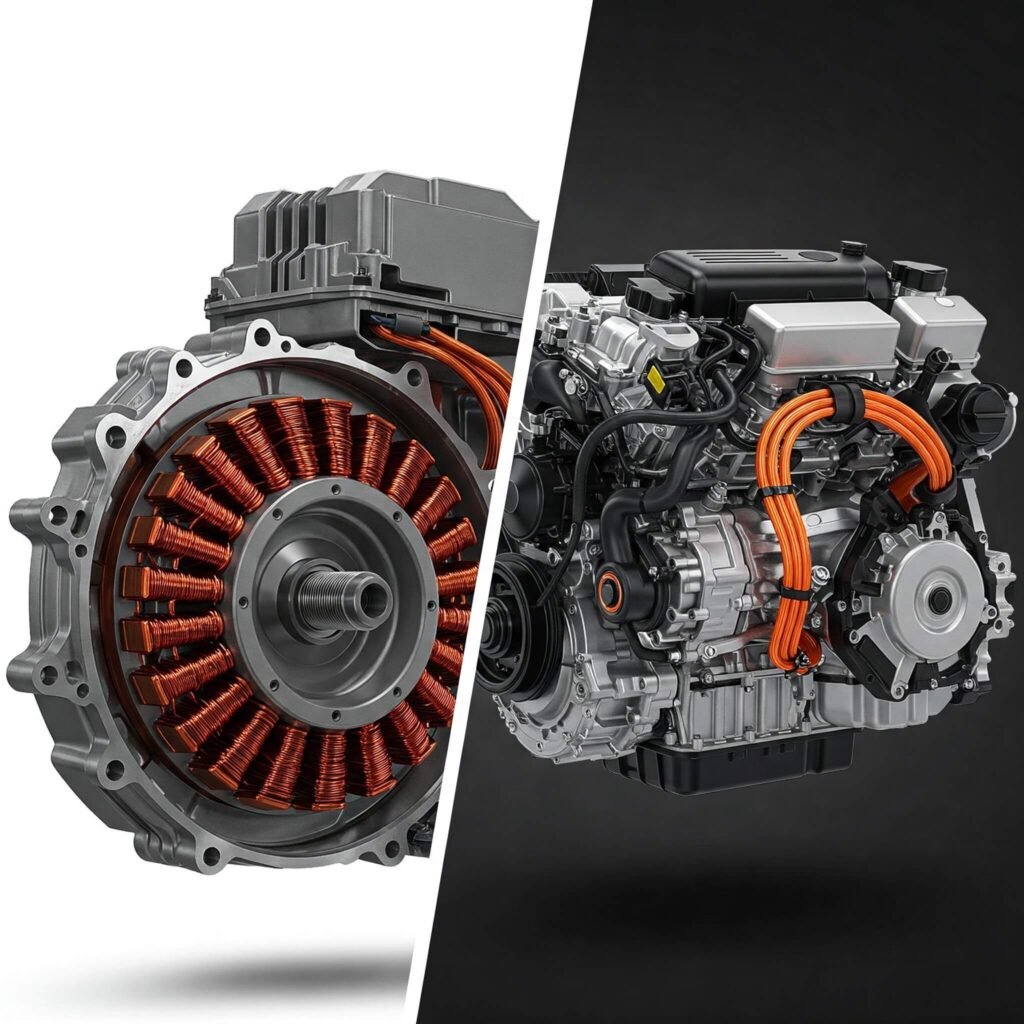The Smart Car Revolution is no longer a futuristic fantasy; it’s the present reality transforming how we interact with our vehicles. Beyond sleek designs and fuel efficiency, a complex network of advanced technologies lies beneath the surface, orchestrating a driving experience unlike any other. Let’s pop the hood and explore what truly powers this automotive evolution.
The Brains of the Operation: Advanced Computing and AI in Smart Cars
At the heart of every smart car lies a powerful central processing unit, akin to the brain of the vehicle. This high-performance computer manages a vast array of functions, from navigation and infotainment to critical safety systems.
Artificial Intelligence: The Co-Pilot of Tomorrow
Artificial intelligence (AI) is rapidly becoming integral to the Smart Car Revolution. AI algorithms analyze data from various sensors to enable features like:
- Adaptive Cruise Control: Maintaining a safe distance from other vehicles and adjusting speed automatically.
- Lane Keeping Assist: Gently nudging the car back into its lane if it starts to drift.
- Predictive Maintenance: Analyzing vehicle data to anticipate potential issues before they occur.
- Personalized Experiences: Learning driver preferences for music, climate control, and even driving routes.

The Eyes and Ears: Sensors and Perception Systems Driving the Smart Car Revolution
Smart cars are equipped with a sophisticated suite of sensors that act as their eyes and ears, constantly monitoring the surrounding environment. These include:
- Cameras: Providing visual data for object detection, lane recognition, and parking assistance.
- Radar: Using radio waves to measure the distance and speed of objects, even in adverse weather conditions.
- Lidar (Light Detection and Ranging): Employing laser beams to create a detailed 3D map of the surroundings, crucial for autonomous driving capabilities.
- Ultrasonic Sensors: Primarily used for parking assistance and detecting nearby obstacles at low speeds.
These sensors generate massive amounts of data that are processed by the car’s central computer to make real-time decisions, enhancing safety and convenience.
V2X Communication: Connecting Smart Cars to Everything
The Smart Car Revolution also encompasses Vehicle-to-Everything (V2X) communication, allowing cars to interact with other vehicles (V2V), infrastructure (V2I), pedestrians (V2P), and the network (V2N). This technology paves the way for:
- Improved Traffic Flow: Sharing real-time traffic information to optimize routes and reduce congestion.
- Enhanced Safety: Receiving alerts about potential hazards, such as accidents or road closures, from other connected entities.
- Cooperative Driving: Enabling vehicles to coordinate their movements for smoother and safer autonomous driving.

Powering the Future: Electric and Hybrid Powertrains in the Smart Car Revolution
While the “under the hood” traditionally referred to the engine, the Smart Car Revolution is increasingly powered by electric and hybrid powertrains.
- Electric Vehicles (EVs): Utilizing battery power to drive electric motors, offering zero tailpipe emissions and a quieter driving experience. Advancements in battery technology are constantly increasing range and reducing charging times.
- Hybrid Vehicles: Combining an internal combustion engine with an electric motor and battery, offering improved fuel efficiency and reduced emissions. 1 Plug-in hybrid electric vehicles (PHEVs) offer the added benefit of all-electric driving for shorter distances. 1. dataintelo.com dataintelo.com
These alternative powertrains are not just about environmental benefits; they also enable new levels of vehicle control and performance, contributing significantly to the Smart Car Revolution.

The Software Ecosystem: Enabling Features and Updates in the Smart Car Revolution
The hardware under the hood is only part of the story. The Smart Car Revolution is heavily reliant on sophisticated software that controls everything from the engine and brakes to the infotainment system and advanced driver-assistance systems (ADAS).
- Over-the-Air (OTA) Updates: Just like your smartphone, smart cars can receive software updates wirelessly, adding new features, improving performance, and addressing potential issues without requiring a visit to the dealership.
- App Integration: Seamless integration with smartphone apps allows drivers to control various vehicle functions remotely, access navigation, and enjoy their favorite entertainment.
- Data Analytics: Smart cars generate vast amounts of data that can be analyzed to improve vehicle design, optimize performance, and even personalize the driving experience further.
The Road Ahead: The Continuous Evolution of the Smart Car Revolution
The Smart Car Revolution is a continuous journey of innovation. We can expect even more groundbreaking technologies to emerge, further blurring the lines between transportation and technology. From fully autonomous driving to even more intuitive and personalized in-car experiences, the future of the automobile is undeniably smart.






































